About ceramic materials
Understanding the characteristics and proper care of your ceramics will help you enjoy your pieces for many years to come. Nakagawa offers three main types of ceramic wares: "Earthenware," "Stoneware," and "Porcelain." Since each type requires different handling, let's first introduce their unique characteristics.
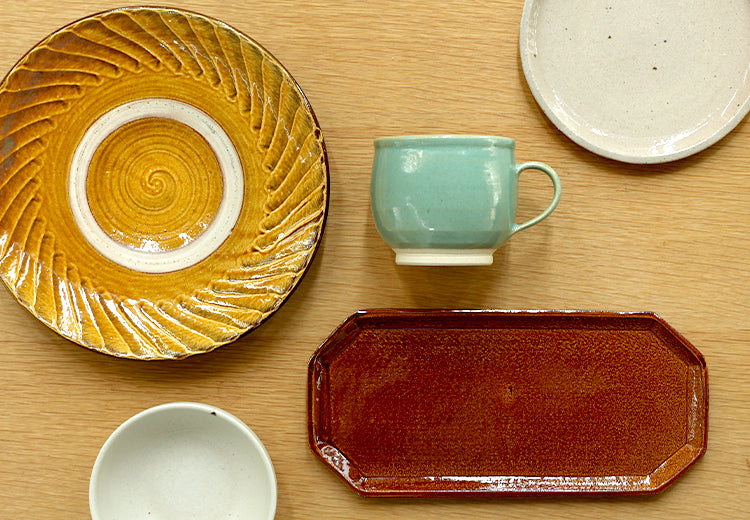
Earthenware
Clay-based pottery made from coloured clay, often called "tsuchimono" (earthenware). When fired, the natural colour of the clay shows through, and pieces typically have a substantial thickness. Each piece has its own unique character, with a signature warm and rustic texture.
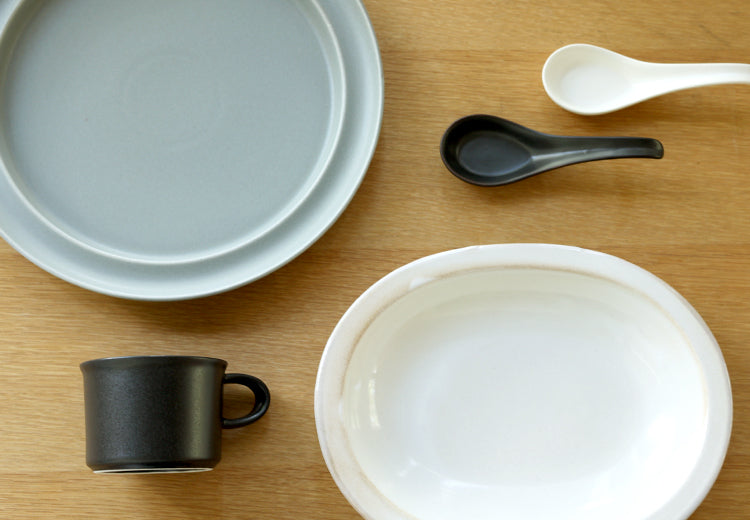
Semi-porcelain
This is also called stoneware. It has properties that fall between earthenware and porcelain. While maintaining the earthy texture of earthenware, it has very low water absorption similar to porcelain.
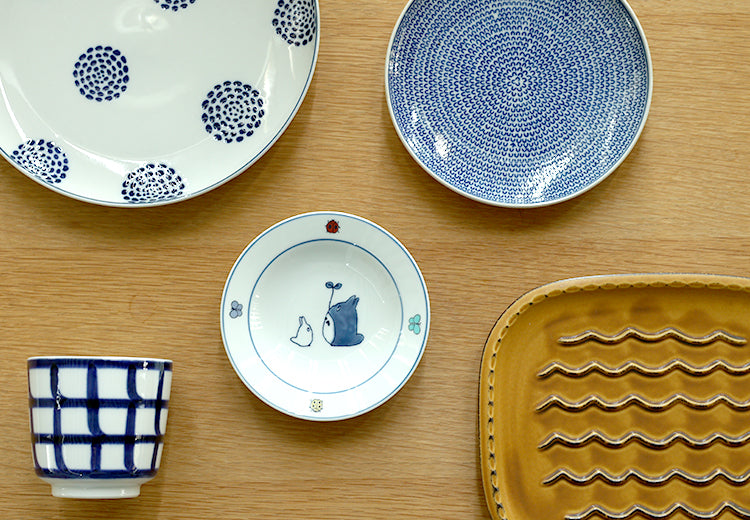
Porcelain
The white body is utilized for applying vibrant colored designs. Due to its high glass content, it's remarkably hard even when thin, often called "ishimono" (stone ware). When lightly tapped with a finger, it produces a high-pitched "ching" sound.
About natural imperfection in ceramics
Ceramics made from natural materials develop various imperfections. At Nakagawa, we believe these differences should be appreciated and enjoyed as the unique character that makes each ceramic piece special.
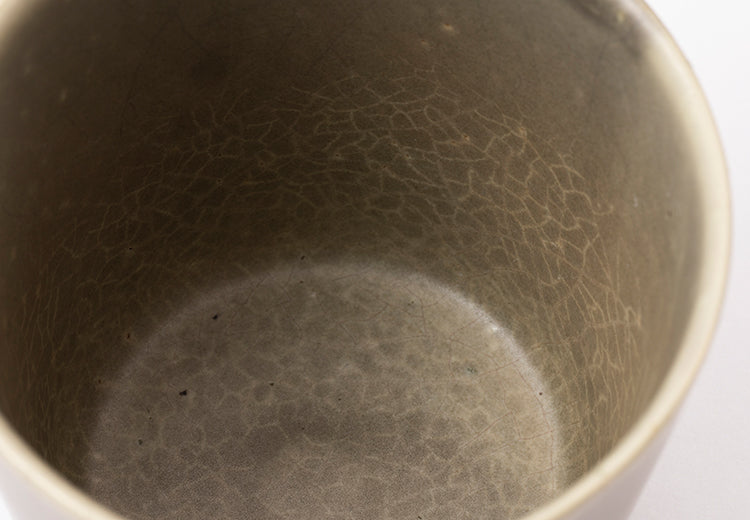
Crazing
The fine cracks that appear in the glass-like surface of ceramics are called "kannyu" (crazing). These occur during firing due to differences in shrinkage rates between the clay body and the glaze, and do not affect the functionality of the piece. Each piece displays unique patterns and depth, which should be appreciated as part of the character of the vessel.
Pieces with crazing tend to absorb moisture more easily. You can prevent odors and oil stains by "sealing" the piece beforehand or soaking it in water before use.
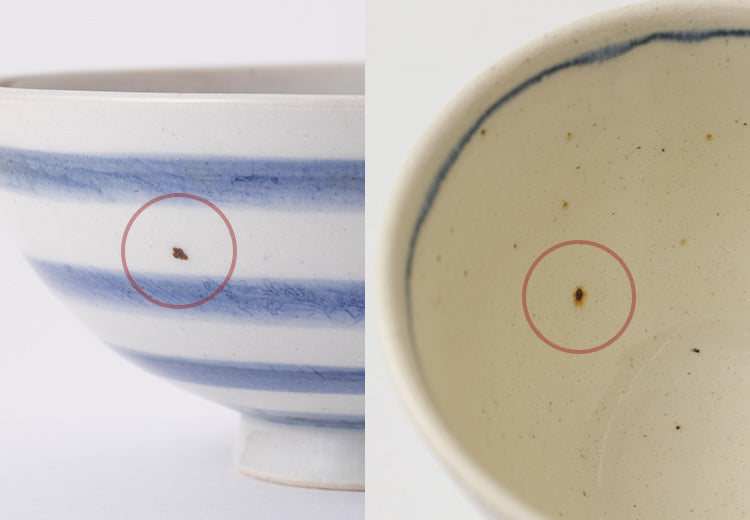
Iron Spots
Iron content naturally present in the clay or glaze may burst during firing, creating black spots. This is an inherent characteristic of ceramics that may unavoidably occur and does not affect the functionality of the piece. While we exclude items with excessively large or noticeable spots as defects, we ask that you view a certain degree of black spotting as part of the unique character and individuality intrinsic to ceramic pieces.
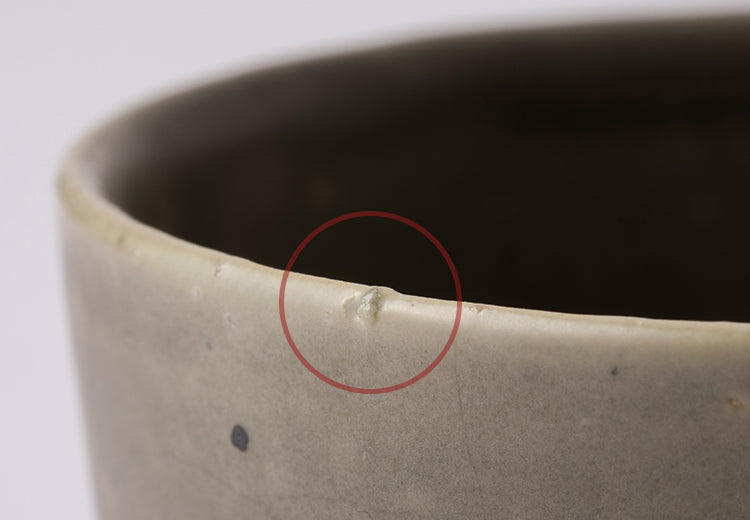
Clay Pops
"Stone bursts" or "clay pops" occur when small stones in the clay body emerge on the surface during firing. These are commonly found in pieces made with coarse clay. While we exclude items with large, prominent pops as defects, those similar to what's shown in the photo are considered a natural characteristic of the material.
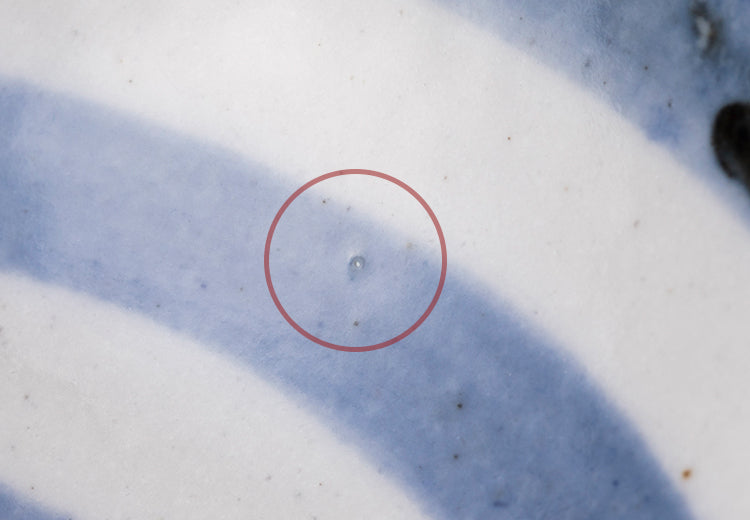
Pinhole
Small holes that appear after glazing and firing due to air or organic matter (such as dust) remaining in the clay body, or due to unevenness in the clay, are called pinholes. This is a phenomenon that inevitably occurs during manufacturing, but it does not affect the functionality of the item. While excessively large pinholes would be considered defective due to aesthetic concerns, pinholes approximately 1mm in diameter, as shown in the photo, are considered acceptable within our quality standards.
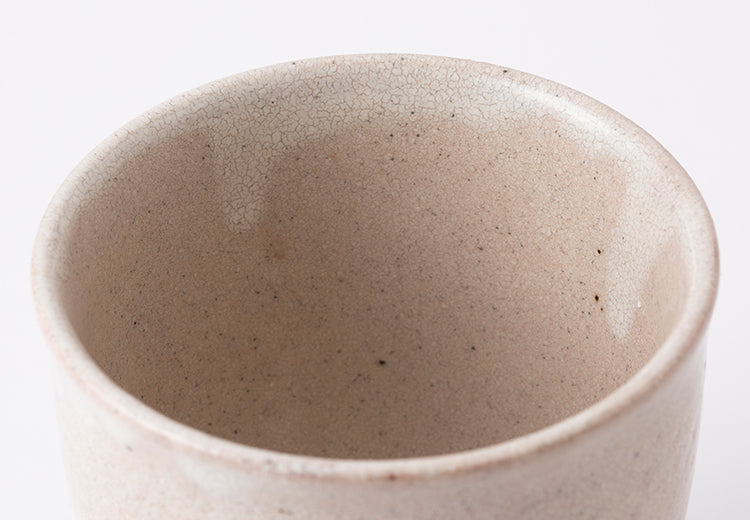
Glaze Drips
When glaze is applied to pottery, gravity naturally causes the glaze to flow and drip, creating what we call "glaze drips" or "yutare" in Japanese. Please enjoy these natural expressions that are unique to ceramics, showcasing the authentic character that emerges during the firing process.
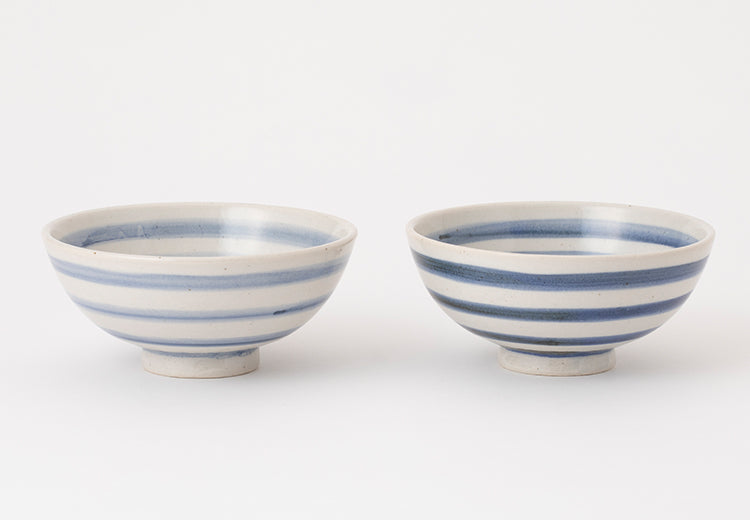
Colour Variation / Surface Finish
Due to the nature of glazes, variations in colour tone and surface glossiness may occur depending on the position within the kiln (temperature and oxygen levels during firing). While pieces that appear to be entirely different products would be considered defective, we believe that slight differences in texture and appearance should be appreciated as individual characteristics that make each piece unique. These subtle variations are part of the charm of handcrafted ceramics.
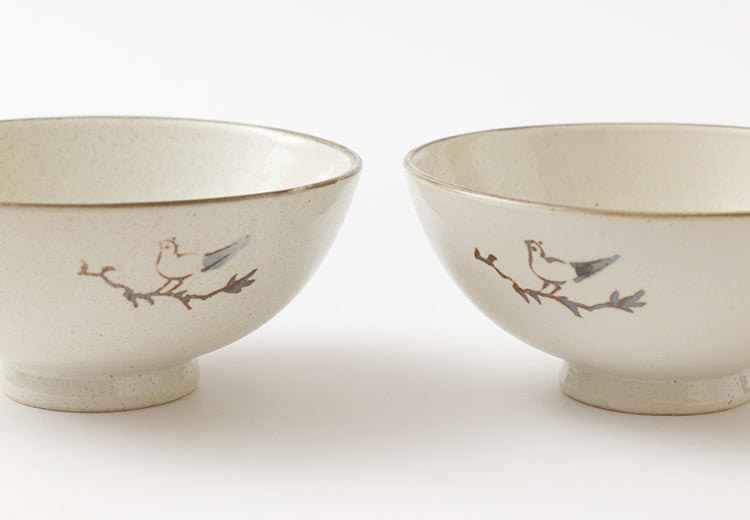
Hand-Painted Decoration
Each piece of pottery decorated with hand-applied brushwork or other decorative techniques will naturally have variations in the patterns and designs. Please enjoy the unique brushstrokes that are characteristic of handcrafted work, where no two pieces are exactly alike.
Sealing Pores
Sealing the pores is a process that should be done before using absorbent pottery for the first time. Pottery is made from coarse clay that contains countless microscopic holes invisible to the naked eye, making it absorbent. Even glazed pieces aren't completely waterproof. Particularly, items with crazing (fine cracks in the glaze) may absorb coloured beverages or oils.
By sealing the pores, you can prevent odours and stains from becoming trapped, helping maintain the original appearance of your pottery for much longer.
Method for Sealing Pores
- Place rice rinsing water and the pottery in a pot, then heat on medium fire
- Just before it boils, reduce to low heat and simmer for about 15 minutes
- Turn off the heat and leave the pottery in the rice water until it cools to room temperature
- Wash thoroughly and dry completely
Frequency of Sealing Pores
Depending on how frequently you use your pottery, we recommend performing this sealing process periodically, such as once every six months or once a year.
About Usage of Dishwasher
While dishwashers can be used for ceramics, they're not recommended. After the dishwasher's drying cycle, the surface may appear dry while moisture remains trapped inside the ceramic body. This can lead to mustiness or mold growth when items are left in the dishwasher. Hand washing is preferable for ceramic items. For more detailed care guide, please see here.
